For the love of classic Bedford vans!
Posted by Chris Graham on 16th June 2023
Russ Harvey meets Paul Parry, whose love of Bedford vans dates all the way back to his childhood, and inspects his CA collection.
All photographs copyright: Russ Harvey
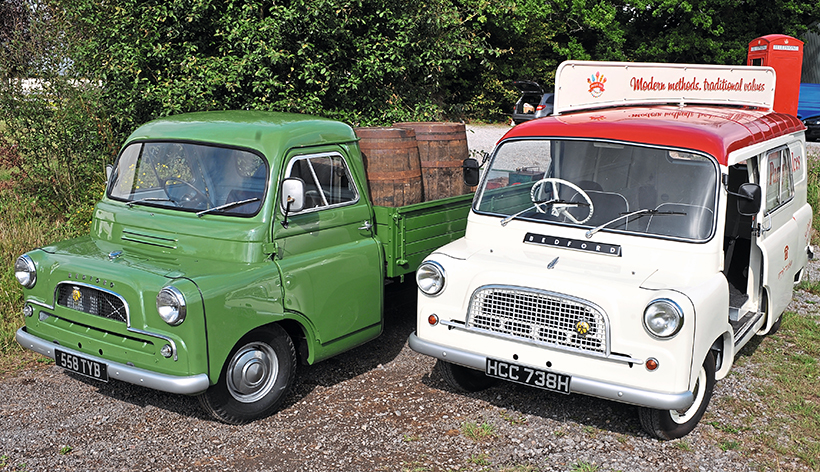
Bedford vans: Paul Parry’s pair of classic CAs.
I stumbled across these superb Bedford CA commercials less than 20 minutes from my front door! The custodian is Paul Parry and he is based in Llantrisant, near Cardiff, from where he runs a plant hire business. His love of the humble CA workhorse stems, he told me, from distant childhood memories of travelling around the South Wales valleys in a relative’s Bedford CA ice cream van. So he just had to have one. No, make that two!
In total contrast to his CAs, Paul also has a fondness for fast Fords; I saw his Ford Escort XR3i and Ford Capri 3.0 when I called to snap the Bedfords.
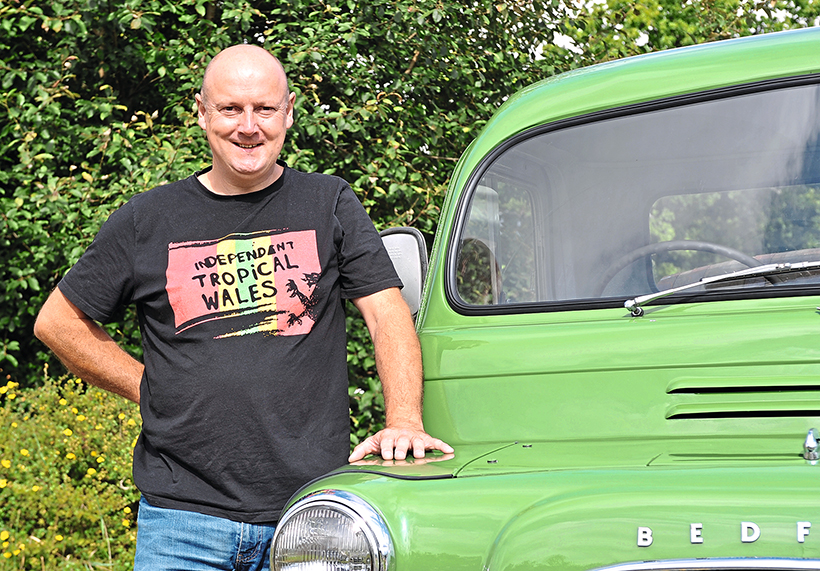
Paul’s connection with the Bedford CA goes right back to childhood memories of happy summers spent in a relative’s ice cream van.
The Bedford CA was introduced during 1952, and remained in production until 1969. Initially it was sold as a 10-12cwt van as well as a chassis/cab and chassis/cowl, the last two being intended, of course, for specialist bodywork. The chassis/cowl was a popular choice for the ice cream van converters.
When launched, the CA was a remarkably advanced vehicle; it had an overhead valve engine which was by no means universal on cars in 1952, and the clever layout – with the engine part in and part out of the cab – maximised payload space within the van’s overall length. It also allowed a spacious cab with direct access from one side to the other, and space for three.
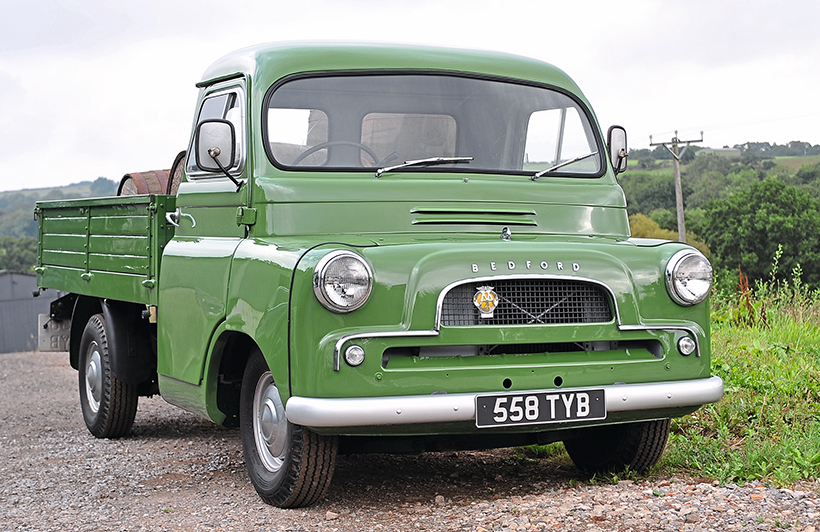
A MkII CA pick-up, based on SWB chassis.
The original van came equipped with a split windscreen, consisting of a pair of flat glass sheets divided by a metal strip, plus spats on the rear wheels. 1957 saw a few engine changes, and 15in wheels also replaced the 16in originals.
MkII CA, CAL & CAS
In 1959, body styling changes included a revised front grille/panel and a one-piece curved windscreen. The rear wheel arch spats were discontinued at this time. Flashing indicators, which had previously been an option, became standard.
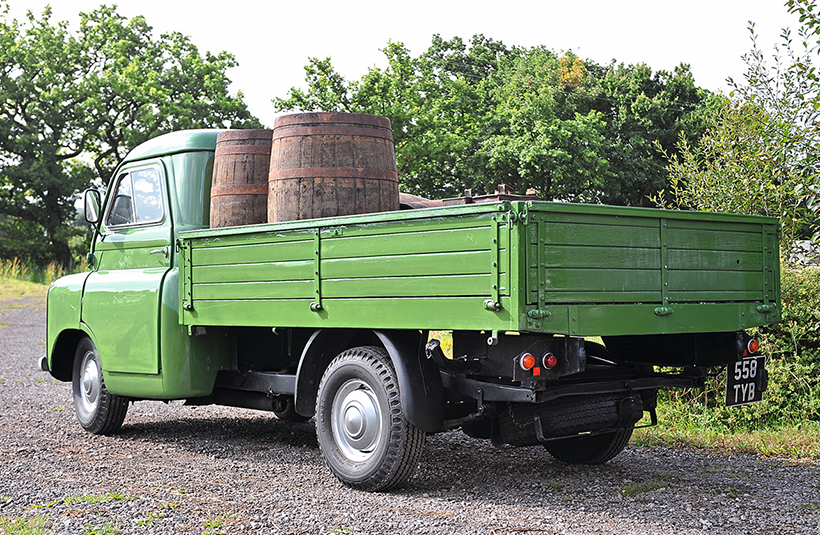
From the rear; the barrels are a recent acquisition in anticipation of a repaint in brewery livery.
The biggest change with this Mk2 version, however, was the addition of a LWB version with, as well as a 102in wheelbase, a 15cwt payload and, with standard factory van bodywork, 162cu.ft of space. The LWB vans received the CAL designation and soon became the most popular version, though the 10-12cwt 90in wheelbase model remained available until CA production ended in 1969. CALs also had wider front doors, with larger windows.
1960 saw the wheels reduce again from 15in to 13in, and the following year (1961) a Perkins 4/99 diesel engine was offered as an option. This cost a not-insignificant £130 extra, so appealed mainly to fleet/high-mileage buyers who could recoup the extra cost in lower fuel bills. Diesel CAs could be identified by a yellow and chrome badge on the radiator grille.
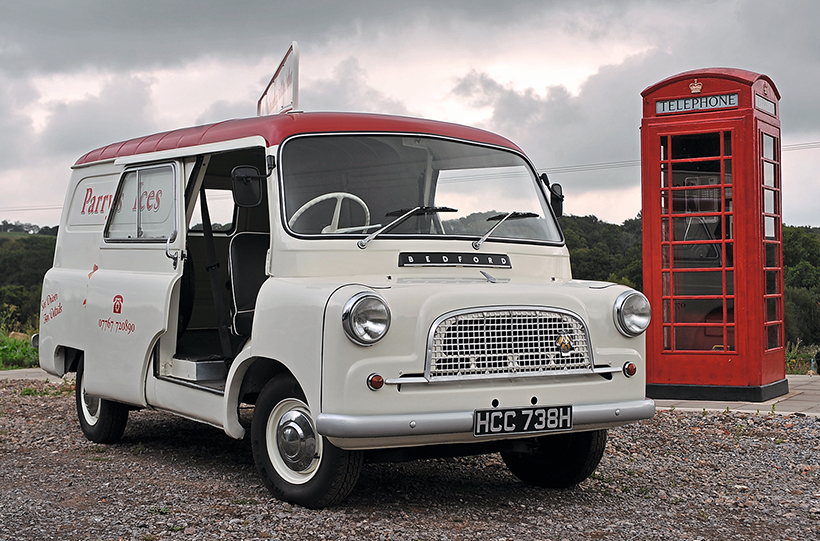
CA MkIII
The last version of the Bedford CA became available in 1964, featuring a much deeper windscreen, a pressed aluminium alloy front grille, updated instrumentation and a 1,595cc petrol engine. From here, there were no changes of any real significance until production ended in 1969.
The Bedford CA started life as a humble light delivery van, however, in chassis form it was supplied to specialist bodybuilders that produced the CA as camper vans, gown vans, mini-buses, pick-ups, mobile shops, milk-floats, the list is endless. And then, of course, there were the various Martin Walter conversions of standard vans. It was a truly versatile commercial vehicle, its replacement was the Bedford CF, however, that was in direct competition with the all-conquering Ford Transit which changed everything when it arrived in 1965, though that’s another story for another time. Total CA production was a little over 370,000.
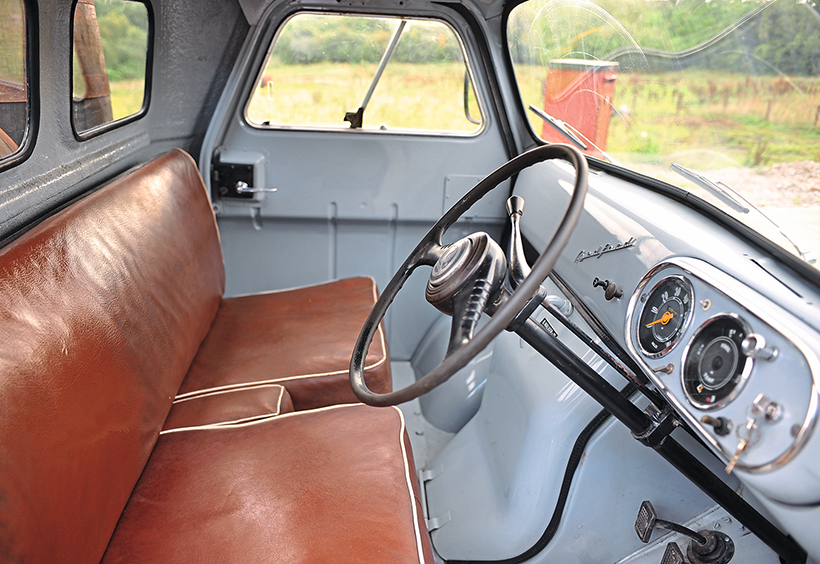
MkII cab; good cross-cab access was a characteristic of the CA’s layout, with the engine part in and part out of the cab.
Walker not Walter
Paul has a 1969 Bedford CA MkIII and a Walker pick-up; no, that isn’t a mistype for Walter, as in Martin Walter! Paul’s pick-up was converted by B Walker & Son, of Gammons Lane, Watford. That company used chassis/cab units from the factory and produced the Bedford CA 10-12cwt pick-up and a 10-12 cwt builders’ truck. Walker & Son also converted the Bedford HA vans into 6-8cwt pick-up trucks, and was involved with specialist laundry van conversions.
The metal-sided CA pick-up appears from adverts of the time to be a superb conversion complete with the rear wheel arch spats, and the advertising refers to a double-skinned construction, which certainly suggests sturdiness; ‘ideal for forest, field or factory’, as Bedford’s advertising copywriters put it!
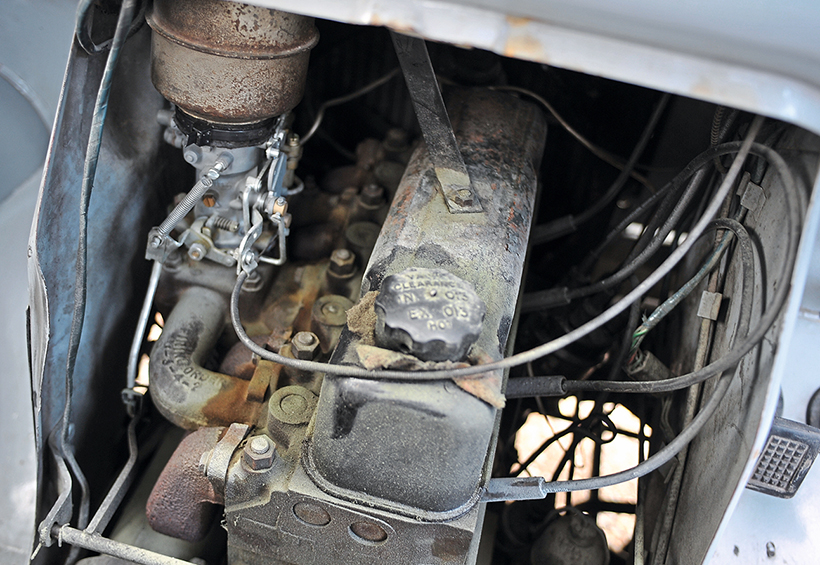
Most engine servicing is via the cab engine cover; some access is lost, but there aren’t many vehicles on which the carburettor can be adjusted while on the move!
Paul’s Walker-bodied CA is the builder’s truck, based on a 1963 MkII chassis. It has clearly been restored to a good standard, but little history is known prior to Paul’s purchase, other than that the original registration suggests it was new in Somerset. The previous owner to Paul, however, was a retired plumber from Bradford who advertised his business with a board attached to the rear.
Paul tells me he really enjoys taking the CA to local car shows and, as you would expect, it attracts lots of attention wherever he goes, even in the local supermarket car park! It’s painted a superb, mid-green and Paul does intend to have a livery applied, something brewery-related; hence the recently-acquired barrels in the back. The cab interior is finished in grey as it would have left the converters, with brown seats lined with cream and, of course, the column change is evident too. But, while the cab is pretty spartan by modern standards, it’s also very light and airy.
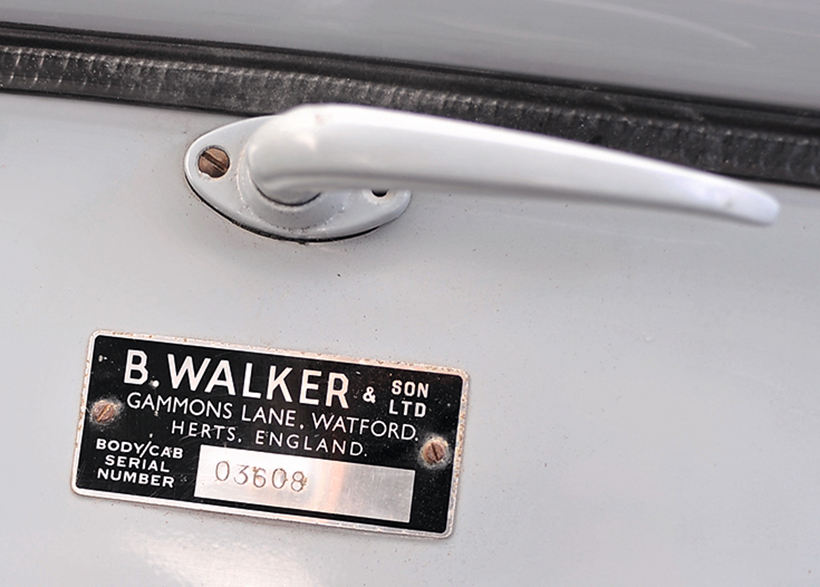
The bodybuilder’s name on the engine cover.
The van is, however, what started it all off. Paul acquired it from a stick-on signage company based in Southampton, in September 2021. Unsurprisingly, it was covered in, er, stick-on signage, which Paul has removed. He has, however, retained the colour scheme. What’s more, a lot of people said it looked like an ice cream van. So, given that his interest in CAs started with ice cream vans, Paul has had ‘Parry’s Ices’ decals made up, which now adorn not only the van itself but also the roof board; the latter, of course, being reminiscent of similar-looking devices used on the roof of newspaper delivery vans.
Paul’s ownership of this van also represents a sort-of homecoming, as ‘CC’ is actually a North Wales (Caernarvonshire) registration, though again the history of this particular one isn’t really known. It was, though, registered in October 1969, three months after CA production ended in July. Was, perhaps, some kind of special deal negotiated for a discontinued model?
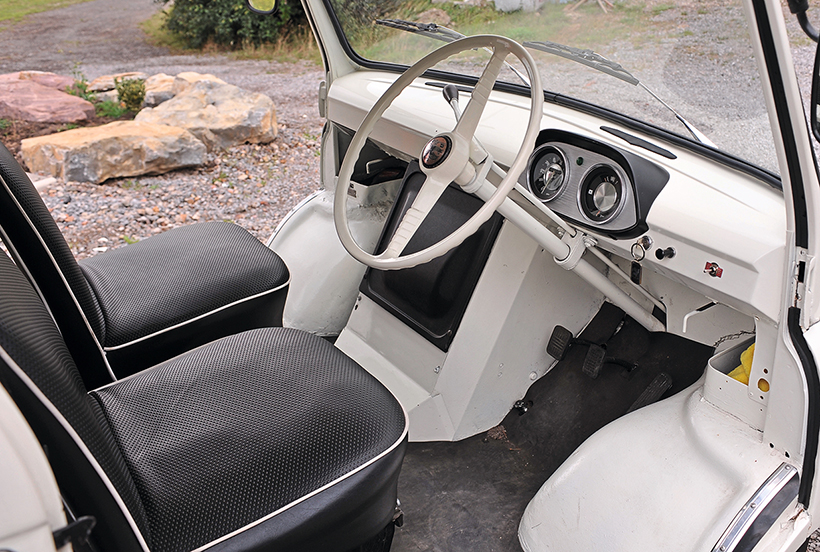
Updated MkIII dash and instrumentation. In the 1970s, some black spray paint and vinyl ‘wood’ could provide a simple and cost-effective update.
So there we are; a lovely pair as was frequently said in Carry On films. It’s always nice to be able to line up an early and a later commercial side-by-side for photos, and the comparisons and changes in the production history can easily be seen.
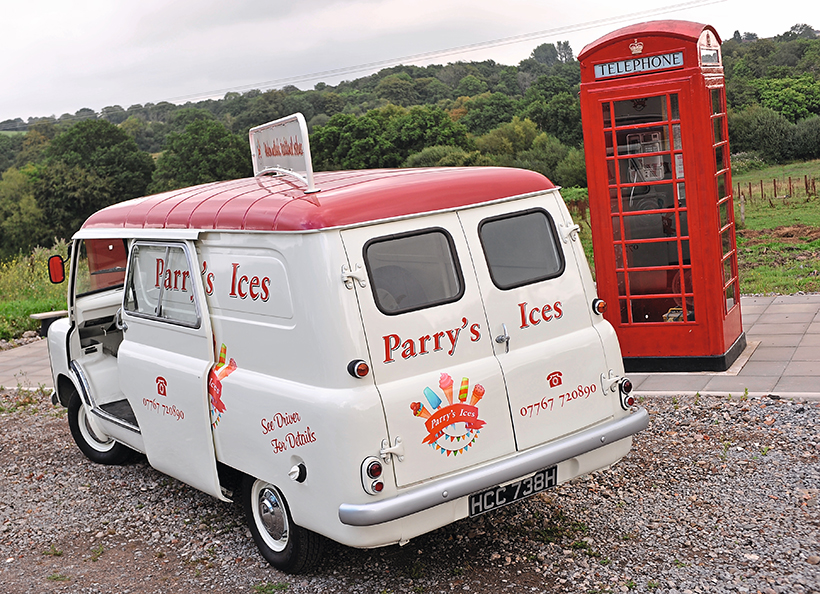
From the rear; a view that hardly changed at all during the CA’s 17-year production run. Parry’s Ices is an entirely fictitious business, chosen because Paul Parry’s love of CAs started with ice cream vans.
This feature comes from the latest issue of Classic & Vintage Commercials, and you can get a money-saving subscription to this magazine simply by clicking HERE
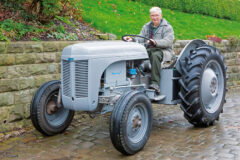
Previous Post
Electric-powered Ferguson TE-A 20
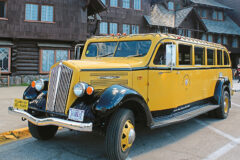
Next Post
Classic White buses back working in Yellowstone!



